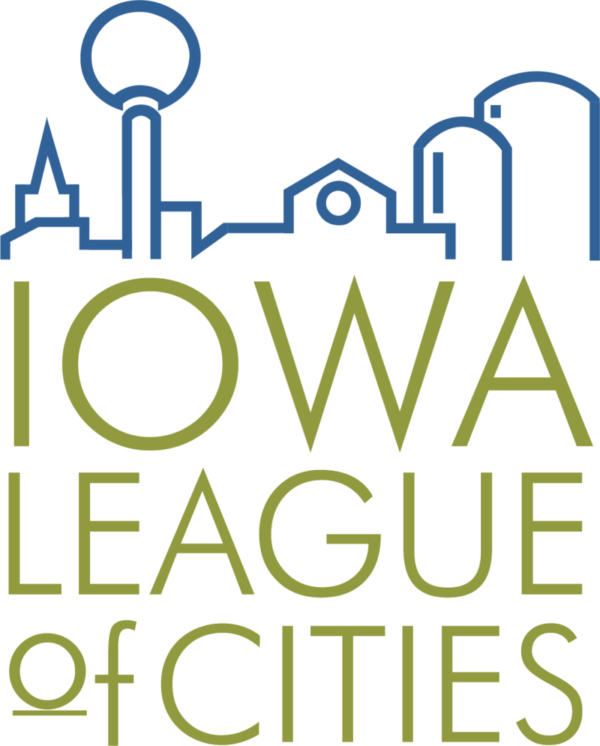Many community leaders ask for guidance regarding steps to follow when considering public improvement projects. Types of projects may vary from a simple roof repair on a public facility, to a sanitary sewer collection system improvement or street project. The steps outlined below will help communities make sound decisions based on information gathered through the process.
Step 1: Identify Need/Project
This is typically done by referring to the community’s Capital Improvement Plan (CIP) for guidance, which also helps identify potential funding sources. If the community does not have a CIP in place the need normally is identified by council directive.
Step 2: Determine if the Project Requires a Design Professional
Code of Iowa Chapter 26 on public improvement projects provides the information to help cities determine whether services from a design professional are needed. If the project exceeds the public improvement threshold a design professional will be required. If the project does not exceed the threshold the city can move forward with the project following standard procedures by obtaining competitive quotes from a contractor.
The city can select a consultant they typically work with. However, if the city does not have an established relationship with a design professional, issuing a Requests For Qualifications (RFQ) will aid in the selection process. The selection process should be based on a number of factors, including:
- Level of trust
- Experience
- Responsiveness
- In-house capabilities
- Innovative solutions
- Ability to act in city’s best interest
- Funding experience
- Specific city knowledge and project expertise
Keep in mind, if the city pursued funding assistance for the project – mainly federal funding such as Community Development Block Grants (CDBG) – a procurement process of issuing an RFQ for professional services would be required.
NOTE: If the proposed project(s) exceeds the threshold a Preliminary Engineering Report (PER)/Facility Plan may be required in order to provide the information necessary for the city to determine the best option for moving forward, or it may be required by a state agency such as the Iowa Department of Natural Resources (IDNR).
Step 3: Select Project Option
City officials review options and select the best solution with consideration of factors such as age of infrastructure, funding sources, budgets, community support and scheduling of other projects in mind. The selected consultant provides the city with direct options.
Step 4: Identify Funding and Budgeting
Funding sources necessary for planning an infrastructure project, including a PER, can come from city budget reserves, Iowa State Revolving Fund (SRF), U.S. Department of Agriculture loans and/or other grant options. The right consultant should have experience guiding the city through this process and help identify and submit applications for applicable funding options.
Step 5: Project Planning and Design
If the project will be financed through a program, such as the SRF program for water/wastewater improvements, additional applications will be required. For example, to be eligible for funding the city would need to be on the SRF’s Intended Use Plan (IUP), and the city may want to consider a SRF Planning and Design Loan to help pay for the PER and project design. The city’s engineer typically assists with these applications before design commences, and the consultant will obtain the necessary permits from the IDNR.
Once the PER is complete and the city selects its preferred option, the design phase of the project begins. After project design is complete the consultant assists the city in obtaining competitive bids for the project. In the case of a project improvement to the wastewater system, the following is an example of a schedule that is typically followed:
- Sample Sanitary Sewer Collection System Improvement Process until Project Bidding
- Submit SRF Planning and Design Loan
- Submit SRF Review Checklist, Clean Water SRF IUP Application, and PER/Facilities Plan
- Clean Water SRF IUP Approval
- Facilities Plan Approval
- SRF Planning and Design Loan Approval
- Survey of Existing Utilities
- Design of Improvements
- Community Development Block Grant (CDBG) Notification of Award (if applying for CDBG funds)
- Submit Final Plans and Specifications to IDNR
- Set Date for Hearing on Plans and Specifications and Bid Letting
Step 6: Project Bidding, Required Hearings and Contractor Selection
Chapter 26 of the Code covers not only the references for when it is necessary to go through the bidding process, but also the required steps that each city must follow:
- Pass a resolution setting the date for the hearing on plans, specifications, form of contract and estimated total cost of the public improvement.
- Publish (or post for cities less than 200 in population) a notice of public hearing on plans, specifications, form of contract and estimated total cost of the public improvement once, at least 4 days but not more than 20 days before the date set for the hearing. The publication shall be in a newspaper of general circulation in the city where the project is located.
- Pass a resolution setting the date for the bid letting.
- Post the notice to bidders not less than 13 days and not more than 45 days prior to the bid letting. The notice shall be posted in a relevant contractor plan room service and construction lead generating service with statewide circulation, and on an Internet site sponsored by either a governmental entity or a statewide association that represents the governmental entity.
- Conduct bid letting.
- Conduct the hearing on plans, specifications, form of contract and estimated total cost of the public improvement.
- Pass a resolution approving plans, specifications, form of contract and estimated total cost.
- Pass a resolution awarding contract to lowest responsive, responsible bidder.
- Approve contract, performance bond, payment bond and certificate of insurance at subsequent city council meeting, if not already providing a city representative the ability to sign once received.
Step 7: Communication until Project Closeout
Once a contractor is selected a pre-construction meeting is set to discuss the construction schedule and city’s expectations. It is also important that the engineer/consultant provide the city with frequent updates on project progress, such as milestones or objectives. In addition, it is also helpful to use social media, the city’s Web site and project newsletters to keep the public informed of the construction process.
While the public improvement process may at times seem like a daunting effort, when broken down into steps it can help cities make sound decisions.






